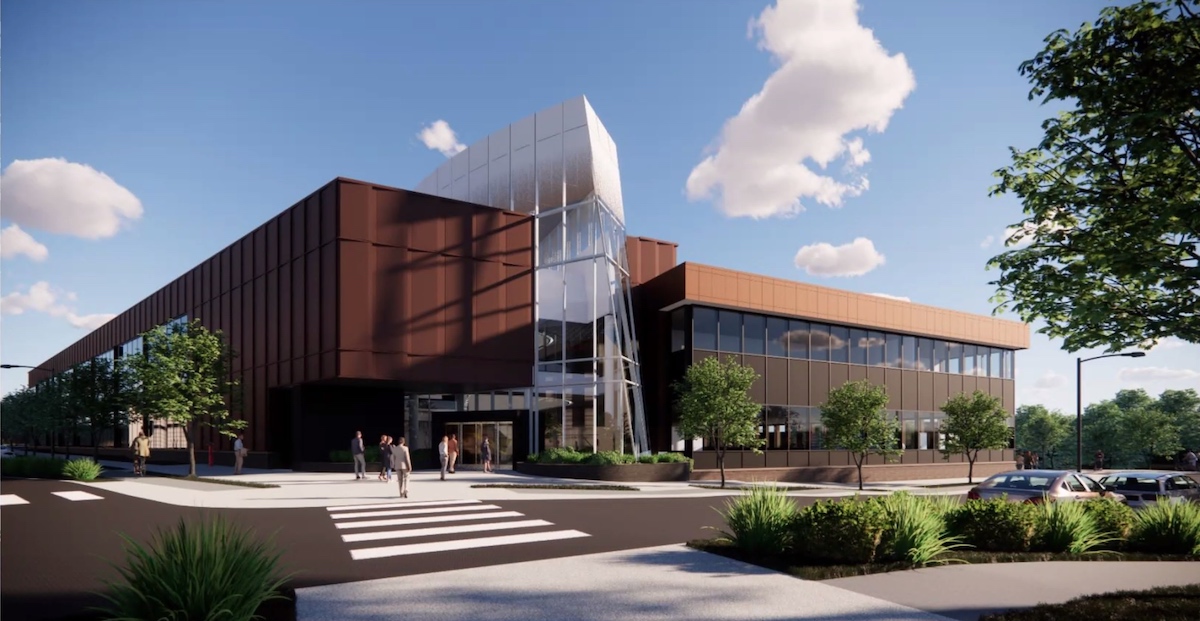The University of Pittsburgh’s vision to turn a grassy part of Hazelwood into a modern biomanufacturing hub came into further focus at a Tuesday meeting.
Construction of a cell and gene therapy facility, dubbed BioForge, is slated to start this fall but the university must first receive approval from the City Planning Commission. The university began that process on Tuesday by briefing the commission on their plan to create a 68-foot-tall building totaling 185,000 square feet.
The proposed site neighbors Mill 19, which houses Carnegie Mellon University’s Manufacturing Futures Institute, and is near a site for which CMU received commission approval to build a robotics laboratory. The site is part of the 178-acre Hazelwood Green site that CMU and Pitt, with the help of local foundations, have targeted for modern research and manufacturing.
Members of the public will be able to weigh in on the plans at a hearing, likely on Sept. 19, before the commissioners vote on the development.
Plans for BioForge call for a public art installation but no set plans have been made. At the center of the proposed two-story building would be a “glass shard” that is “meant to be a beacon that announces the importance of the building and pull the people towards the building,” according to Vance Cheatham, an architect working on the project.
There are also plans to install electric vehicle and e-bike charging stations. Contrasting that modern addition is the use of pre-weathered steel and reclaimed wood meant to nod to the area’s industrial history, according to the plans presented to the commissioners.
There will be 200 employees working in the facility, along with a projected 900 construction jobs and 360 off-site support jobs, according to Pitt.
Earlier this summer, the Pitt Board of Trustees Property and Facilities Committee approved $120 million in spending to build the “core and shell” of BioForge. If approved, construction is expected to go into 2025.
Tuesday’s presentation also highlighted the university’s community outreach efforts citing seven meetings held between April and July.
CMU has highlighted similar efforts to meet with residents to discuss the plans. Both universities have said that they use community feedback to help inform their overall plans for the area and promise to bring opportunities from Hazelwood Green to the neighborhood.
Some residents, though, have said they are unaware of what’s happening on the site, or feel they’ve been left out of the conversation and may not be served by the development.
Like much of the region, Hazelwood economically suffered after the collapse of former manufacturing industries.
Up until the 1990s, Jones & Laughlin Steel and its successor LTV Steel operated on the Hazelwood Green site. Pitt’s pitch directly addresses this history by positioning the effort as a transformation of the “Steel Valley” into the “Bio Valley.”







